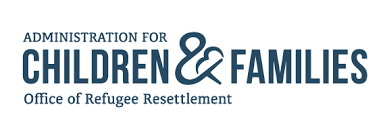INTRODUCTION AND DEFINITION OF THE ISSUE In the age of social media, children do not have the same privacy at home as previous generations. Imagine a child growing up in 2023, going to school, playing with friends, and getting into … Read More
Child Well-Being

FROM CHILD WELFARE TO WELL-BEING: A Blueprint for CBOs and Government Agencies
EXECUTIVE SUMMARY The US child welfare system incentivizes a reactionary rather than a proactive response, resulting in cases of child abuse and neglect that could have been avoided. Within the system, well-established business models and federal financial incentives are designed … Read More

The Role of Parent Partner Programs in Supporting Prevention and Reunification
A brief from Casey Family Programs discusses the positive impacts of parent partner programs in child welfare, such as offering guidance and hope to parents navigating challenging circumstances. Focusing on reunification, these programs provide support by drawing on the firsthand experiences of … Read More

Capacity Building Center for Tribes Releases New Prevention Resources
The Capacity Building Center for Tribes released two new prevention resources: a brief on family-strengthening prevention practices and definitions and a guide highlighting culturally relevant services and supports for child welfare programs. The Capacity Building Center for Tribes Prevention Brief defines each stage of … Read More

How Child Welfare Agencies Can Support Reunification
The American Bar Association’s Center on Children and the Law hosted a webinar, “What Child Welfare Agencies Can Do to Support Reunification,” on resource and foster caregivers’ roles in the reunification process. The session focused on how child welfare agencies can facilitate … Read More

The Science of Engaging Youth Lived Experience in Health Research, Practice, and Policy
Proceedings of a Workshop—in Brief INTRODUCTION There is a growing body of evidence demonstrating the value of incorporating youth voices in the development of research and programming aimed at supporting youth well-being. Participatory methods have the potential to help address … Read More

Social Media and Adolescent Health
Introduction There are over 1.3 billion young people between ages 10 and 19 in the world today, approximately 1.8 billion between ages 10 and 24, making up the largest generation of youth to have ever lived (Bustreo et al., 2022; … Read More

ORR Influx Care Facilities for Unaccompanied Children Fact Sheet
The U.S. Department of Health and Human Services (HHS) is working diligently with its interagency partners to ensure that unaccompanied migrant children are placed with vetted family members or other sponsors in the U.S. as quickly and safely as possible. … Read More

A Proclamation on National Foster Care Month, 2024
The nearly 370,000 children in foster care deserve to grow up in safe and loving homes that help them reach their full potential. During National Foster Care Month, we share our gratitude for the foster parents who show foster youth … Read More

The What, Why, and How of Collecting and Analyzing Demographic Data to Improve Equity in Child Welfare
Introduction This brief summarizes practices related to collecting detailed demographic data—such as race, ethnicity, sexual orientation, gender identity, and gender expression—and other data to measure equity in child welfare. We compiled these data practices from an environmental scan of academic … Read More

